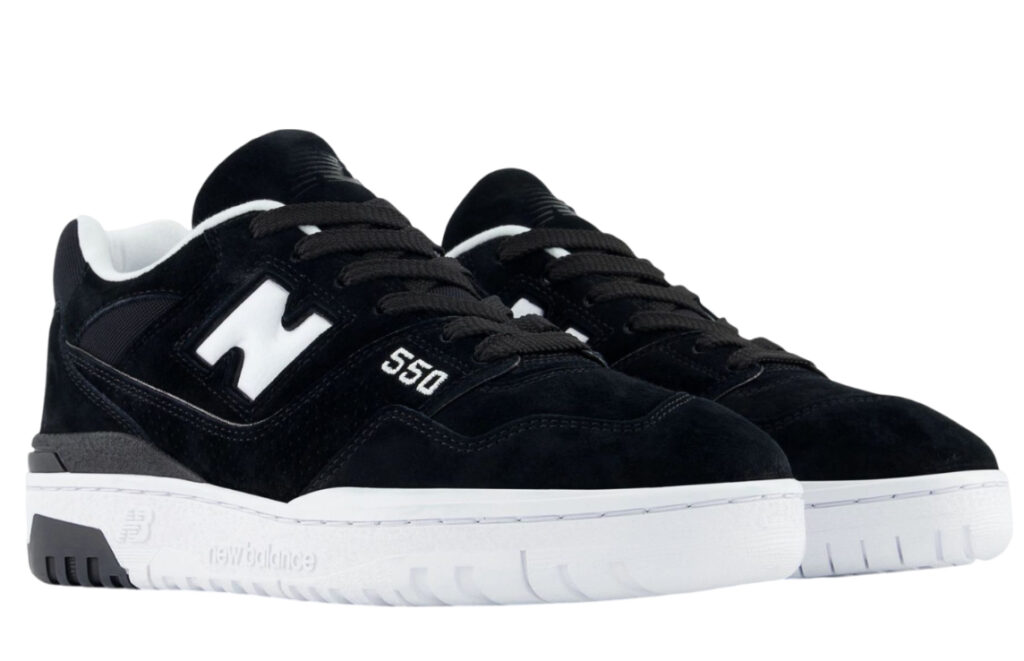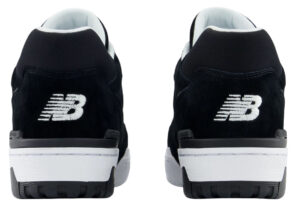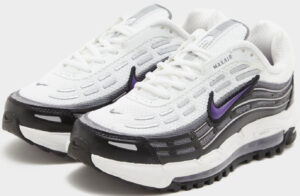In the saturated realm of shoe culture, where every silhouette is restyled, remixed, and reissued in an ever-accelerating trend cycle, the New Balance 550 stands apart. Originally launched in 1989 as a basketball shoe, the model found its way back into the mainstream via a strategic revival by Teddy Santis’ Aimé Leon Dore in 2020. Since then, the 550 has become a staple—an icon of minimalism with a shape that resonates across fashion, function, and form. The upcoming 2025 Black/White edition doesn’t seek to reinvent, nor does it shout for attention; instead, it leans into a foundational aesthetic, reasserting the 550’s core identity through contrast, clarity, and restraint.
A Return to Monochrome: Aesthetic as Discipline
The Black/White iteration of the 550 may seem simple at first glance. But that simplicity is deliberate, even tactical. In a marketplace dominated by maximalist colorways, gradient fades, and material fusion, this edition stands as a quiet statement: purity is timeless. The color blocking is surgical—white leather dominates the upper, perforated for breathability and given texture by precisely stitched overlays, while matte black is used to ground the heel counter, outsole, collar, and iconic “N” logo. The result is a sneaker that feels like it could have existed in 1989 or 2029.
This isn’t an aesthetic born of nostalgia alone. The 550 Black/White is strategic in its neutrality. It integrates effortlessly with both streetwear and suiting, with minimalism and maximalism. It is a canvas shoe for a culture driven by layering—of garments, genres, and identities.
Technical Construction: A Balance of Function and Heritage
Underneath its minimal exterior lies a build designed to bridge vintage athleticism and modern wearability. The shoe features a leather upper with mesh underlays at the tongue and collar, providing breathability while preserving structure. The molded EVA foam midsole offers balanced cushioning, maintaining the original flat stance of the basketball shoe lineage.
Its rubber outsole—with a classic herringbone pattern—offers traction for everyday wear, though its use on courts has largely faded. The padded collar and tongue ensure comfort during prolonged use, while the reinforced eyestays preserve durability. There’s no need for futuristic gimmicks here. The 550 is a masterclass in shoe engineering as practiced in the late 20th century, delivered without compromise to those with 21st-century expectations.
The Cultural Utility of a “Blank” Shoe
The appeal of a black-and-white sneaker is its ability to transcend narrative. Unlike themed collaborations or celebrity drops, the Black/White 550 offers no preloaded storyline. It doesn’t attempt to tie itself to a city, moment, or subculture. And in doing so, it becomes remarkably versatile.
Artists, stylists, editors, and athletes have all been spotted wearing the 550 in its many variations. But this Black/White model strips away identity cues, reducing the sneaker to form and function. It invites the wearer to become the author of its meaning. Worn with wide-leg trousers or nylon cargos, it feels Gen Z; paired with cropped jeans and wool overcoats, it evokes a Euro-chic minimalism. It’s the rare sneaker that doesn’t impose itself on the outfit—it augments it.
The 550’s Place in the Archive of Revivalist Sneakers
The 2025 release of the Black/White New Balance 550 comes at a curious juncture in footwear design. While many brands chase ever-bulkier midsoles or ultra-light materials derived from biomaterials and 3D printing, New Balance has succeeded in pulling a decades-old silhouette into the present with almost no material changes. That speaks volumes.
The 550 wasn’t always an icon. In fact, its original run was brief, outshone by other models like the 574 and 990. It was Santis’ ALD capsule that pulled it from obscurity and elevated it into fashion consciousness. Since then, New Balance has run a careful strategy: limiting availability, expanding colorways, and aligning drops with trend-cognizant retailers.
But the Black/White edition is different. It’s not about limited runs or high-fashion co-signs. It’s about permanence. Like the Stan Smith or the Air Force 1, this 550 is built to last beyond the hype cycles. It may be purchased as a daily driver, a uniform sneaker, a dependable pair you don’t have to think twice about. That type of consumer trust can’t be manufactured—it’s earned through years of consistent design and cultural relevance.
Style Forecast: Why Monochrome Still Reigns
2025 is poised to be a year defined by aesthetic recalibration. After seasons of technicolor maximalism, fashion is returning to monochrome palettes, industrial shapes, and archival references. Brands across the spectrum—from luxury houses to streetwear labels—are embracing pared-down storytelling and utilitarian design. The 550 Black/White fits this narrative perfectly. It’s the anti-hype sneaker in a hype-saturated market.
Whether worn with Arc’teryx outerwear in a normcore fit or offset against a Raf Simons trench coat in a fashion editorial, the 550 does what few sneakers can: it creates style by refusing to compete. It’s a low-profile contradiction—casual, yet structured; nostalgic, yet modern.
Impression
There’s something profoundly modern about the refusal to shout. In a world overrun with drop culture and algorithmic trendsetting, the 2025 New Balance 550 Black/White offers stillness. It doesn’t reinvent; it refines. It doesn’t flash; it anchors. And in doing so, it becomes not just another sneaker release—but a foundation.
This shoe represents more than a product. It embodies the possibility that timeless design, thoughtful restraint, and cultural neutrality can still triumph in an industry driven by spectacle. The 550 Black/White is not here to compete. It’s here to stay.
No comments yet.









